Learn how to make a silky pastry cream (Crème Pâtissière) to use in pastries, trifles, cakes, tarts, or just to eat on its own! This easy-to-follow recipe will help you achieve perfect results every time!
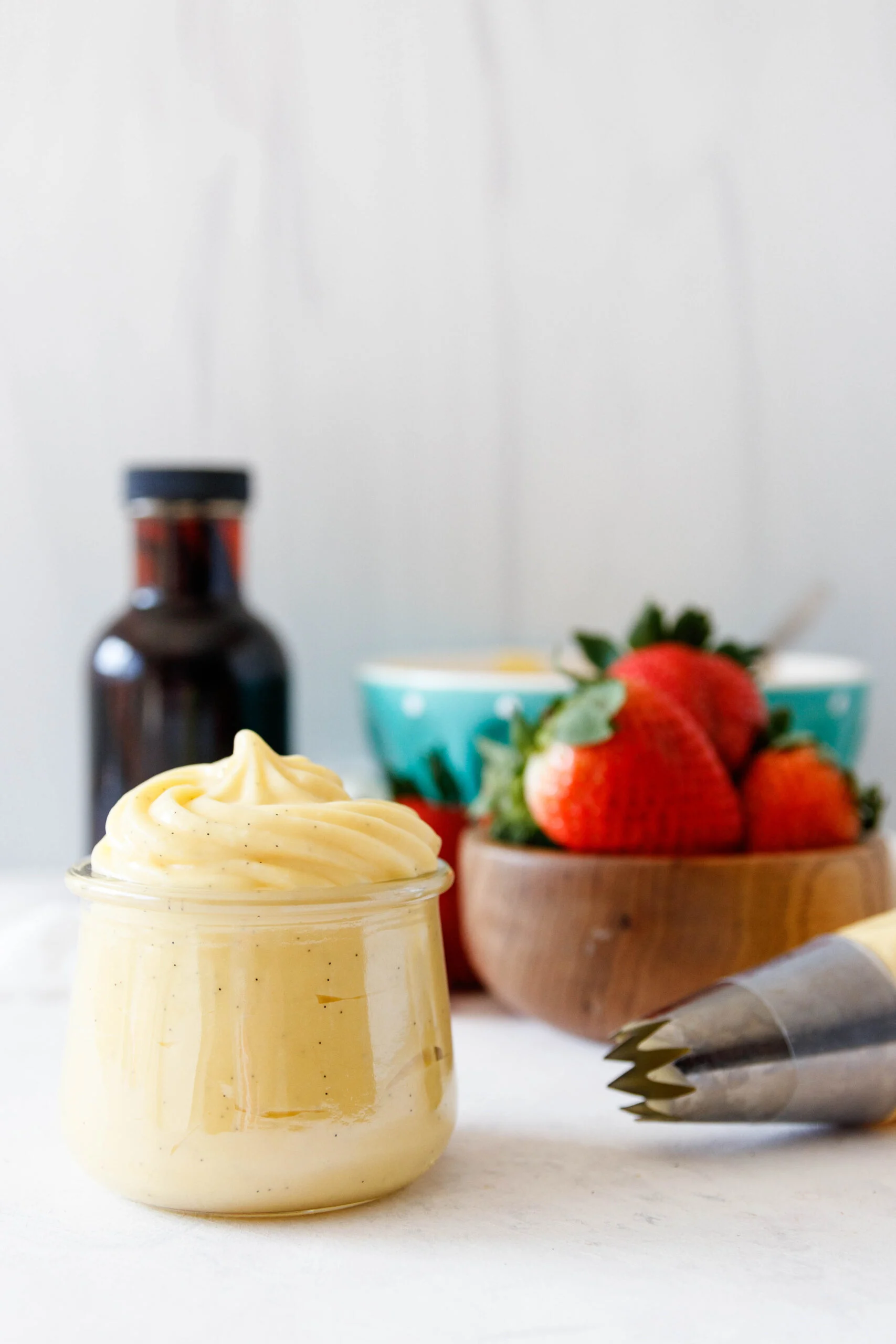
Pastry cream is one of the classic dessert fillings. It’s silky, smooth, lightly sweetened, with a slightly eggy flavor. Unlike its pourable cousin, creme Anglaise, pastry cream is thick enough to use as a filling or base for so many desserts.
It’s like a vanilla pudding, but with a far richer flavor.
Pastry Cream Ingredients
The ingredient list for crème pâtissière is pretty simple. The recipe uses egg yolks, milk, sugar, vanilla, butter, and cornstarch or flour as a thickener.
Using egg yolks also helps make the custard extra rich. The egg yolks add creaminess and a lovely color.
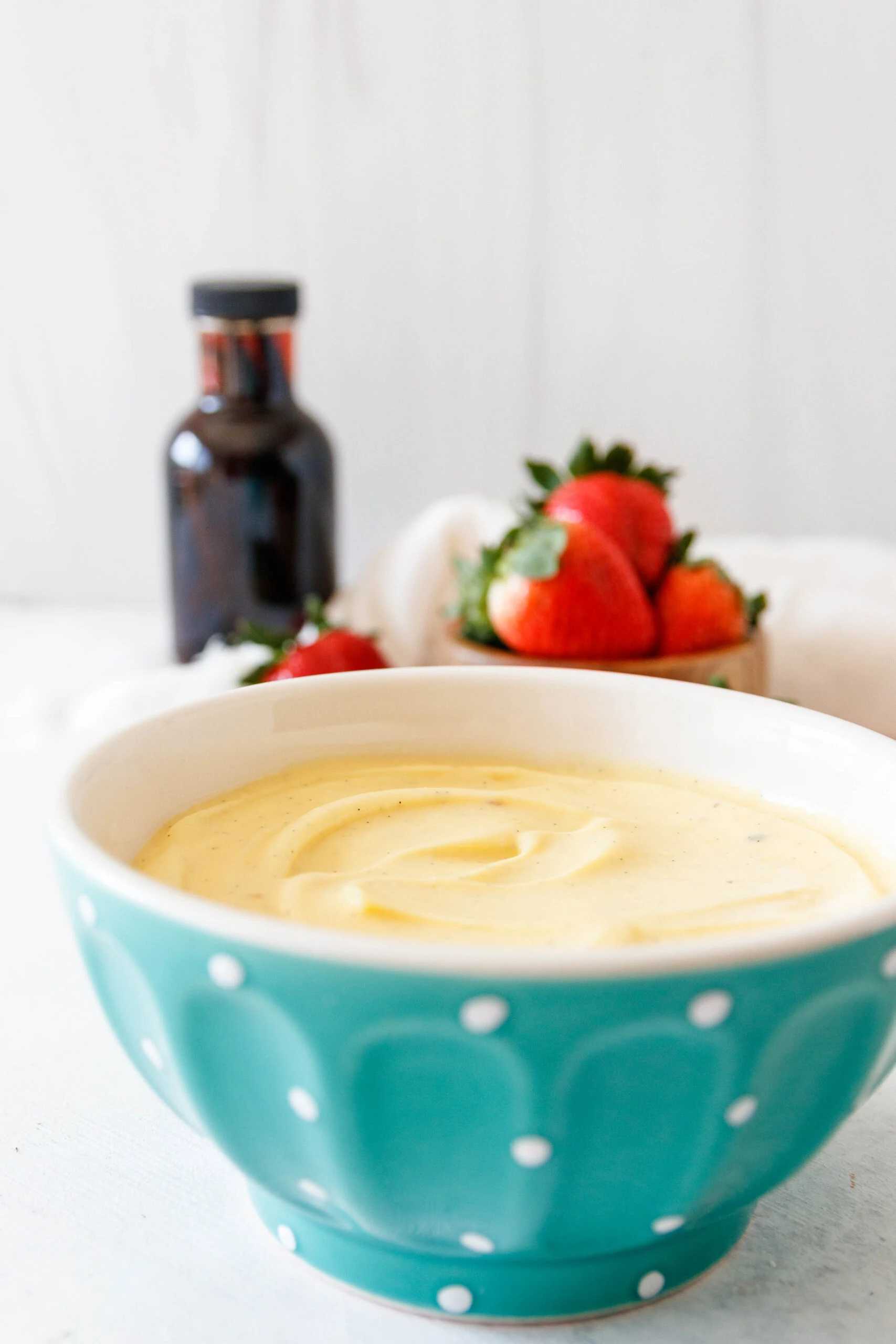
You can use salted or unsalted butter for this recipe. While there is a slight difference in flavor, I’ve used both and they’re equally good.
How to flavor crème pâtissière
Today, we’re sticking to classic vanilla. The vanilla is either vanilla extract or vanilla bean; paste works too. Vanilla is a universally loved flavor, and versatile! I also made the pastry cream to use in two recipes I have coming your way soon. They’re pretty exciting and an excellent reason to break out your whisk!
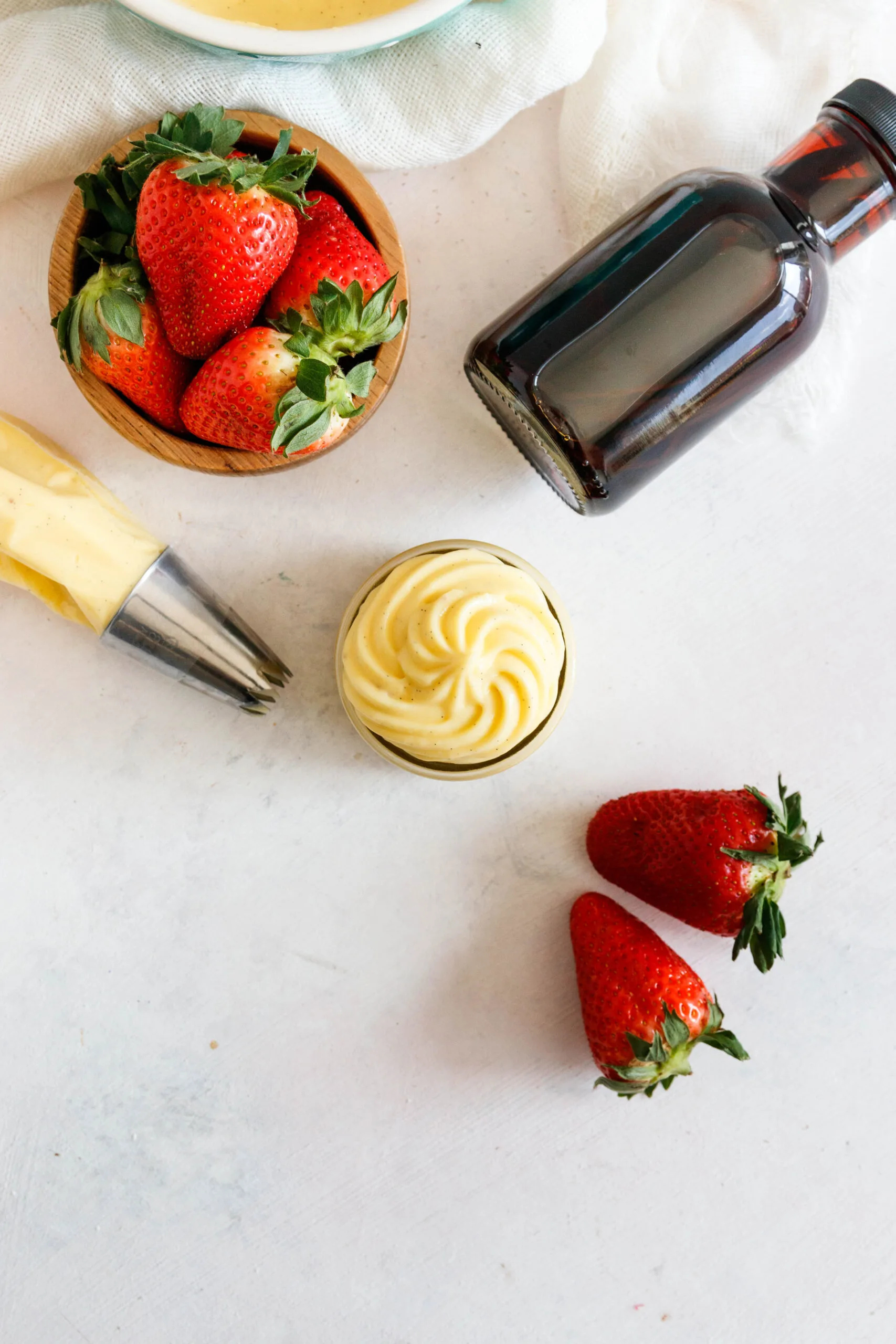
Of course, you aren’t limited to vanilla for flavor! You can pretty much use anything to flavor this recipe, from chocolate to spices to fruit or liquors.
Can I make this in advance? What about freezing?
The answers are yes and maybe. 😉
Yes, you can absolutely make your cream in advance. It keeps quite well in the refrigerator, covered, for up to 5 days. After that it gets a little grainy and it’s best to make a new batch.
As for freezing, it depends on the recipe. Remember when I told you that pastry cream is made with either cornstarch or flour?
Pastry cream made with cornstarch cannot be frozen because the cornstarch will cause separation. Cream made with flour can be frozen for up to 2 months, then thawed overnight in the refrigerator.
So is it better to use flour or cornstarch as a thickener?
Again, that depends on your preferences. I’ve tried a few different recipes before settling on my go-to, and I like cornstarch because the final result is slightly silkier. Cornstarch just dissolves a little better than flour, in my opinion.

On the other hand, if I’m in a situation where I need to freeze the cream, I just swap flour for the cornstarch. Is the final result a little more viscous? Yes. Is it still enjoyed? Absolutely. And when it just has to be made in advance, or I want to use it in something I intend to freeze for later (like cream puffs), it’s a time saver!
Know that if you need this pastry cream to be gluten-free, use cornstarch!
Just because you’re choosing to make something from scratch doesn’t mean you don’t have to carefully manage your available time. Busy people can cook great food!
Can I use non-dairy milk in pastry cream?
Before we get to the recipe, I just want to talk about this one last thing. You’ll notice I do in a lot of my recipes. I get a lot of questions about substituting for dairy and eggs.
The good news is, you can use non-dairy milk. I recommend using higher-fat milk for the best results though. Just like whole milk is best for the recipe if using dairy milk, you’ll want creamier non-dairy milk as a substitute. That means coconut milk is probably your best option.
It will impart a light coconut flavor to the cream, but the result could be absolutely delicious and amazing in so many desserts!
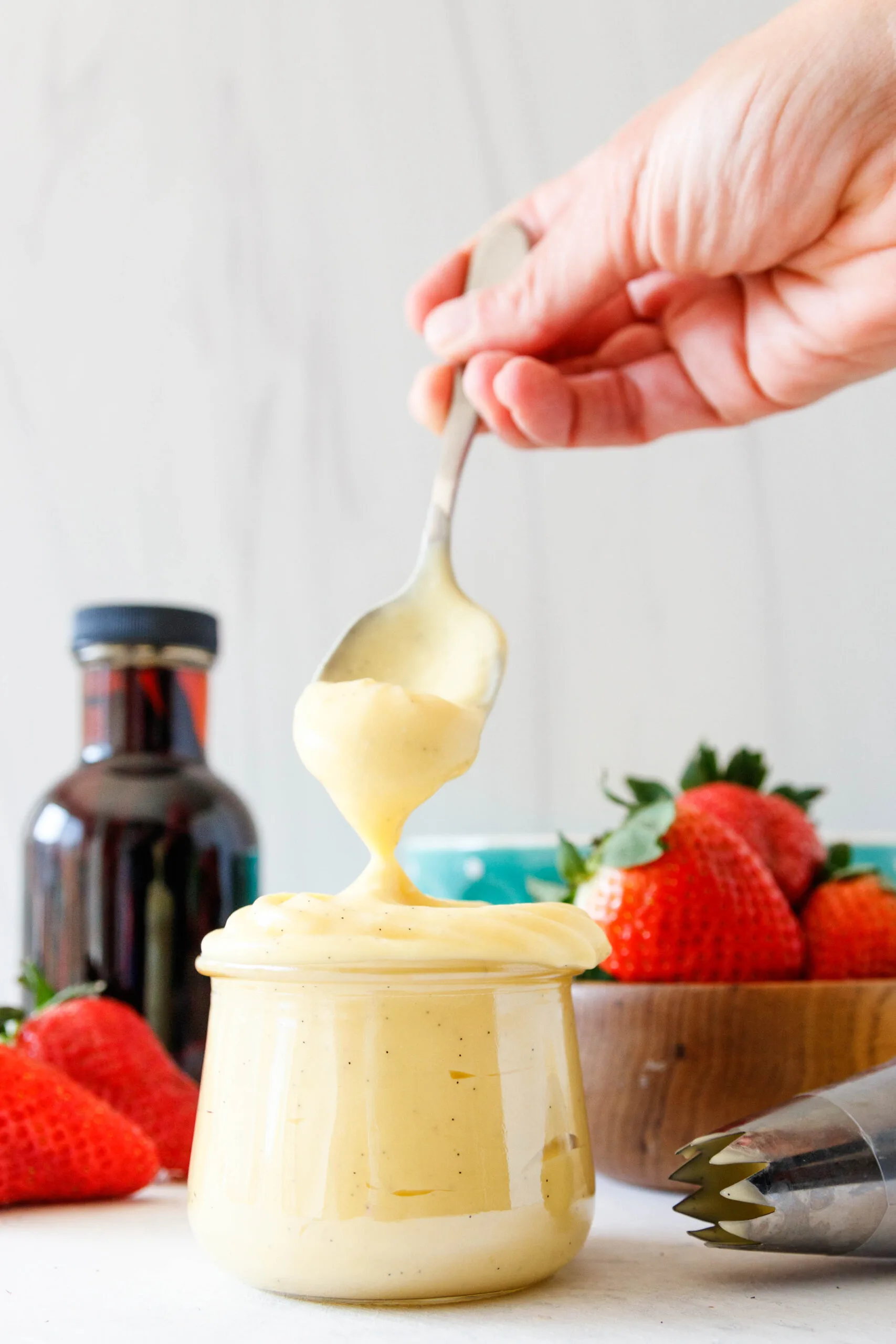
I hope you give this recipe a try… enjoy, darlings!
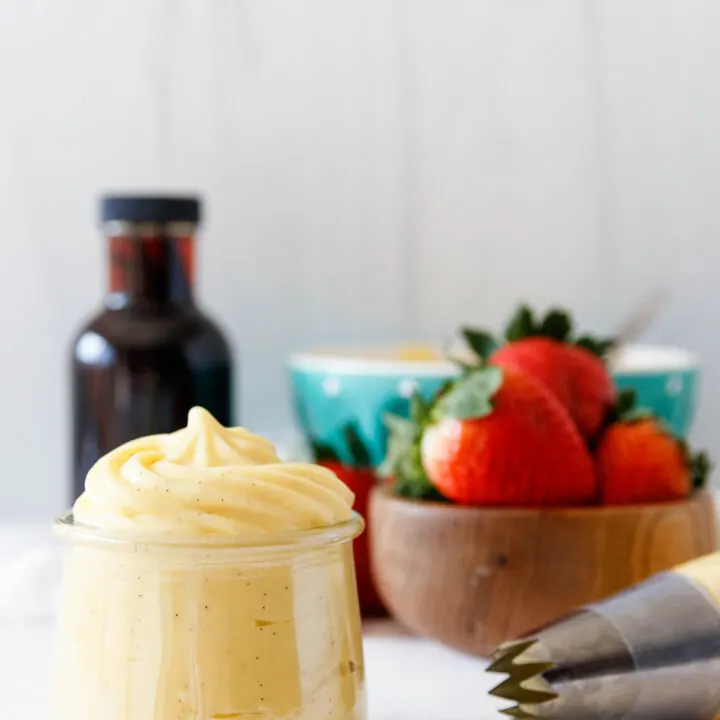
Pastry Cream {Crème Pâtissière}
Learn how to make a silky pastry cream (Crème Pâtissière) to use in pastries, trifles, cakes, tarts, or just to eat on its own! This easy-to-follow recipe will help you achieve perfect results every time!
Ingredients
- 2 cups milk (see notes)
- 1 vanilla bean, scraped or 2 teaspoons vanilla extract (see notes)
- 1/2 cup granulated sugar
- 3 tablespoons cornstarch (see notes)
- 1/4 teaspoon kosher salt
- 4 large egg yolks
- 2 tablespoons butter (see notes)
Instructions
- If you are using a vanilla bean, be sure to read the notes. You'll need to steep the bean in the milk before starting to make the pastry cream. Steeping allows you to get the most flavor out of your vanilla bean. This is not necessary if you are using vanilla bean paste or vanilla extract.
- Set a fine-mesh sieve over a heat-proof bowl and set it aside.
- In a medium mixing bowl, or right in the saucepan if you'd like, whisk together the sugar, cornstarch, and salt. Add the egg yolks and beat until well combined and light yellow.
- While whisking continuously, slowly pour in your milk and keep whisking until smooth and homogenous.
- If you didn't mix right in the pot, transfer your mixture to a small saucepan (2-2.5 quarts).
- Set the pot over medium-low heat and cook, whisking constantly, until small bubbles start to form. Don't walk away! This process takes about 3-5 minutes depending on the starting temperature of your ingredients.
- Once the mixture starts to bubble slightly, whisk for another minute until it's rather thick and the whisk leaves small trails in the cream.
- Remove the pastry cream from the heat and stir in the butter. Keep whisking until it's melted. If you are using vanilla extract or vanilla bean paste, stir it into the mixture here.
- Pour the mixture through the sieve to remove any accidental lumps. Press a piece of plastic wrap or parchment paper directly over the surface of the pastry cream. This prevents the formation of a skin on the surface of the custard.
- At this point, refrigerate the custard until very cold, at least two hours.
Notes
- Whole milk will give the best results in the recipe.
- Follow the steps here if you are using a vanilla bean: If you are using a vanilla bean, you'll want to gently heat the milk with the vanilla bean pod and caviar (the goo inside) and allow it time to steep. Don't let the milk boil, and remove it from the heat as soon as tiny bubbles begin to appear. If you want, you can even do this the day before you plan to make the cream. A long steep time will give you a stronger flavor. Remove the pod from the milk before proceeding with the recipe.
- To achieve the same results as the photo - which I use almost all the time - use the 3 tablespoons of cornstarch. If you need a stiffer pastry cream, you can use 4 tablespoons of cornstarch. I only do this when I need a particularly stiff cream and don't want to use a pudding. For example, with some cakes.
- If you need to make this pastry cream in advance and freeze for use later, replace the 3 tablespoons of cornstarch with 3 tablespoons of all-purpose flour.
- If you are using salted butter, you can omit the salt in the recipe.
- This recipe is barely adapted from Serious Eats
Recommended Products
As an Amazon Associate and member of other affiliate programs, I earn from qualifying purchases.





